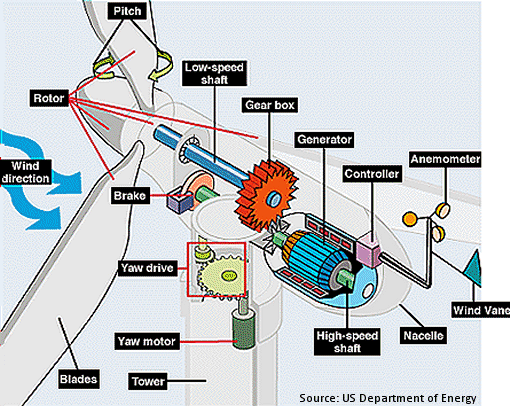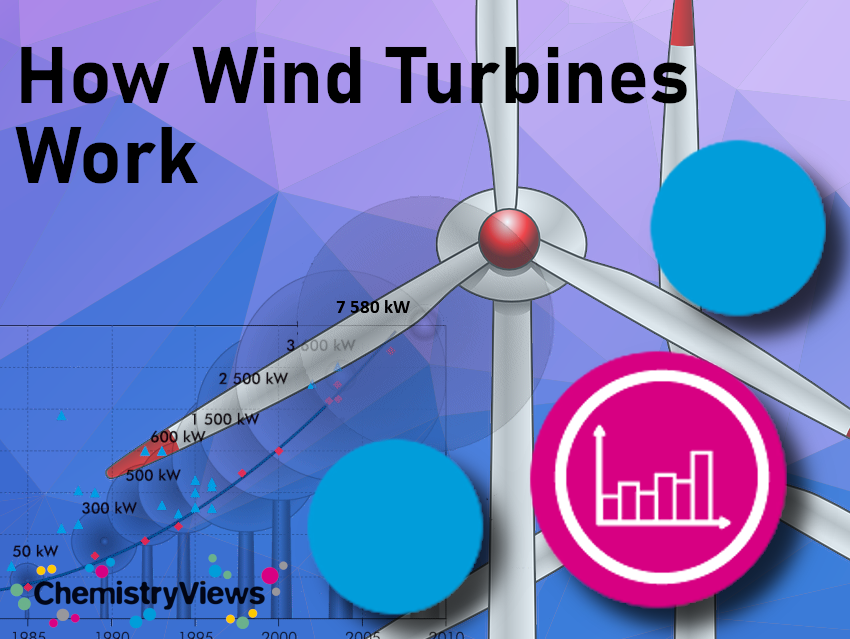Since 1980, the diameter of the rotors of wind turbines has doubled each decade, and therefore increased the turbine height. Each generation of turbines was predicted to be the biggest, but turbines keep growing in an effort to capture the stronger winds accessible at higher elevations, and improve performance. New materials have made this possible.
Size and Power Evolution of Wind Turbines Over Time
.gif)
Internal Workings of a Wind Turbine

When wind presses on the rotor blades of a wind turbine, the rotor starts to run. This converts the kinetic energy of the wind into a rotary motion. This drives a generator inside the nacelle, which in turn converts the mechanical energy into electrical energy.
Turbine Size Changes with Position
Land and sea breezes resulting from the different rates of heating of land and water mean average wind speeds on the coast are slightly above those inland. Therefore, offshore wind farms can generate the same amount of power with a smaller rotor.

Turbine Size Changes with Position
.gif)
Sources
- International Energy Agency (IEA), Paris, France
- US Department of Energy, USA
- US National Energy Education Development Project (NEED), Manassas, VA, USA
- Renewable Energy Agency (AEE), Berlin, Germany
- All Clever Pictures
- Industrial Roundup: Renewable Energy Trends in 2013, ChemistryViews 2013.




Please present power output vs. wind speed for various rotor diameters?
Also, please present the realized power output (for ex., megawatt/year/rated capacity).
Otherwise, an excellent overview. Thank you.